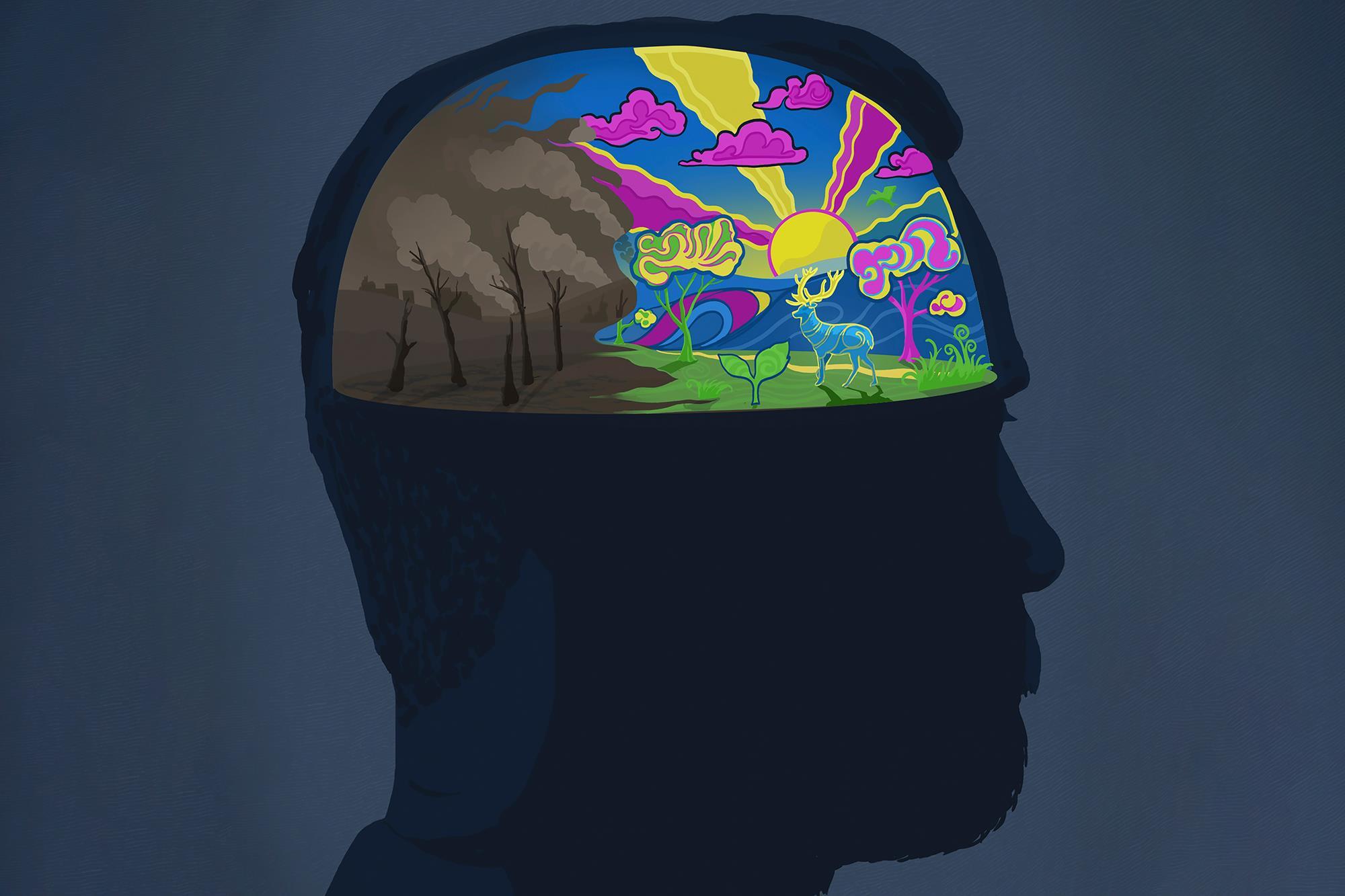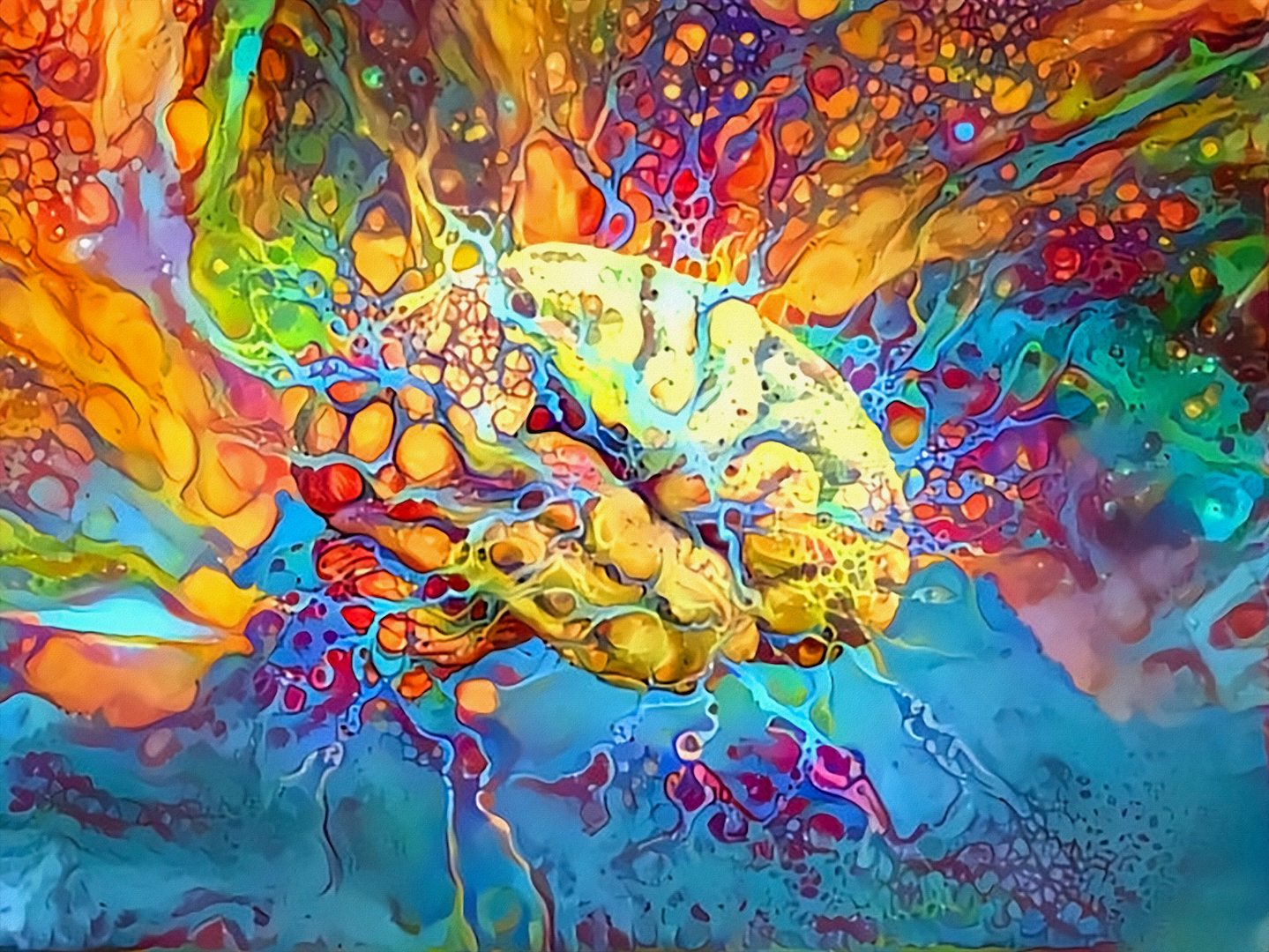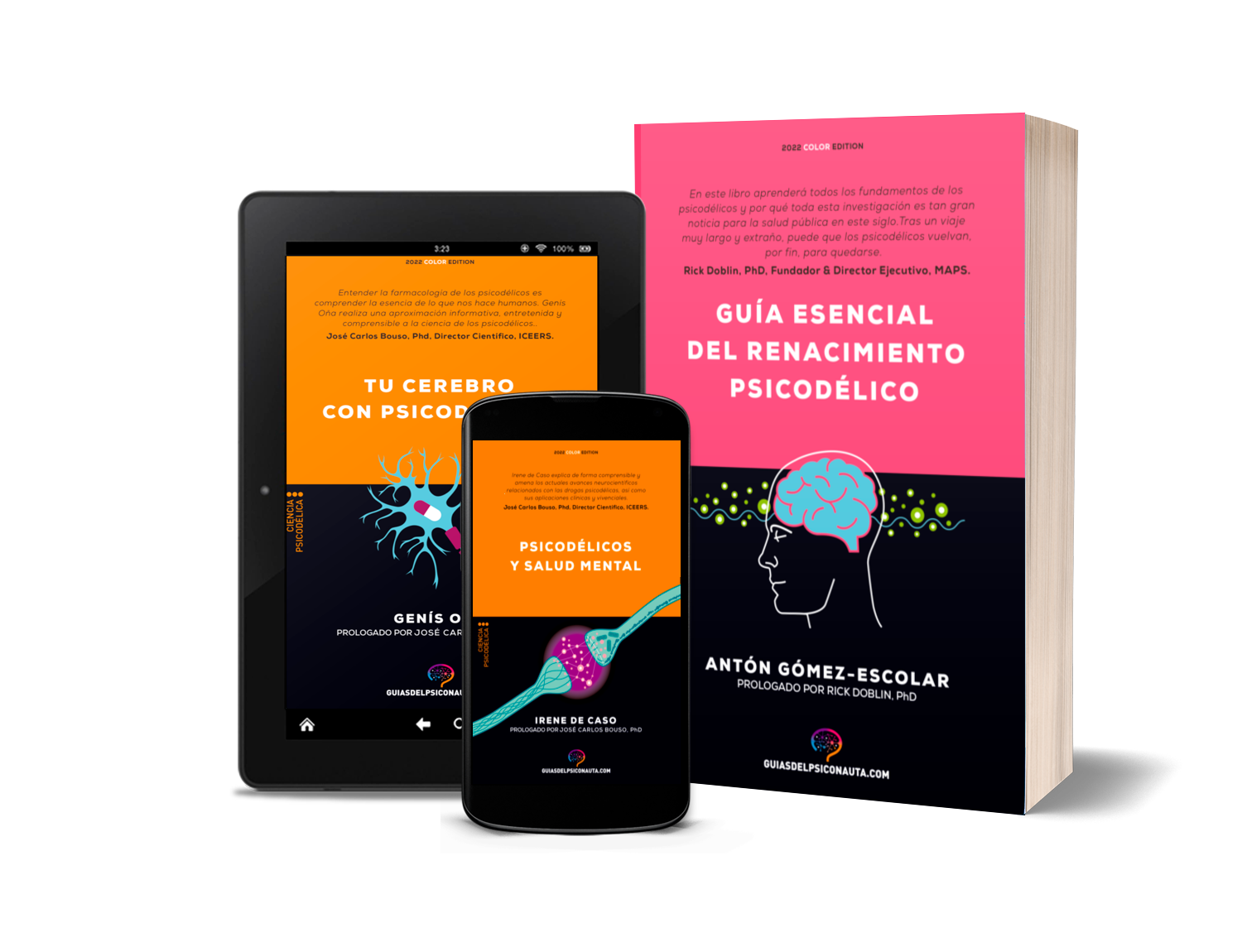By Gabriel García May 17, 2024
In the ever-evolving field of psychedelic research, a groundbreaking study has recently highlighted the profound impact that closing one’s eyes can have on the intensity of a psychedelic experience. Published in the journal ACS Chemical Neuroscience, the study explores the nuances of “set and setting”, a well-known concept in the psychedelic community that emphasises the importance of mindset and environment during a trip. This study, however, is the first to provide quantitative evidence showing how these factors, particularly eye closure, can modulate the effects of psychedelics such as LSD.
The study in a nutshell
The study, conducted by a team of leading researchers including Pedro Mediano, Fernando Rosas and Robin Carhart-Harris, involved 20 healthy volunteers who underwent two experimental sessions. In one session, a placebo (intravenous saline) was administered, and in the other, intravenous LSD (75 μg) was administered. During these sessions, participants were subjected to four different conditions: resting with eyes closed, listening to ambient instrumental music with eyes closed, resting with eyes open while staring at a point, and watching a silent nature documentary. Magnetoencephalography (MEG) data were collected and participants completed questionnaires to assess their subjective experiences in terms of intensity, emotional arousal, ego-dissolution, positive mood and image complexity.

Eye closure and enhanced psychedelic experiences
Researchers found that participants who closed their eyes during LSD sessions had more intense psychedelic experiences than those who kept their eyes open. This phenomenon was linked to an increase in brain entropy, a measure of the complexity and randomness of brain activity. Increased brain entropy is often associated with deeper psychedelic experiences, as well as states of consciousness such as meditation and flow.
Interestingly, while external stimuli (such as watching videos) increased brain entropy, they also seemed to dilute the subjective intensity of the psychedelic experience. This suggests that visual distractions may compete with the images and sensations generated internally by psychedelics, thus reducing the overall impact.
Therapeutic implications
These findings have significant implications for the therapeutic use of psychedelics. The concept of brain entropy is central to understanding how psychedelics can facilitate therapeutic change. Increased brain entropy during a psychedelic experience can open a ‘window of opportunity’ for mental plasticity and transformation. However, the study suggests that the therapeutic benefits of psychedelics are maximised in environments that minimise external distractions.
In clinical settings, it is common practice to provide participants with sunglasses or encourage them to close their eyes while listening to music. This study reinforces the validity of these practices, demonstrating that closed-eye conditions enhance the connection between brain entropy and subjective psychedelic effects. For example, ego-dissolution - a state in which the sense of self dissolves - was more pronounced with eyes closed and correlated with increased entropy in the brain’s default mode network.
The role of music versus visual stimuli
The study also highlighted the different effects of auditory and visual stimuli. Music, less intrusive than visual stimuli, interfered less with the relationship between brain entropy and subjective experiences. This supports the use of music as an aid in psychedelic therapy, helping to increase the therapeutic potential without overwhelming the sensory experience.

Conclusion
Research underlines the importance of “set and setting” in psychedelic experiences, particularly the act of closing one’s eyes. This simple practice can intensify the subjective effects of psychedelics, making the experience more vivid and potentially more therapeutic. As psychedelic therapy continues to gain traction, this knowledge could guide clinical practices, helping to optimise the conditions under which these potent substances are administered.
By understanding the dynamics between brain activity, subjective experience, and environmental factors, clinicians and researchers will be able to better understand the potential of psychedelics in the field of psychedelic therapy.
If you are interested in learning more about this exciting world, we invite you to consult the Psychonaut’s Guides by Argonowta. These books will give you a broad and balanced view of psychedelics and their potential therapeutic effects. Remember, however, that these substances are not a panacea or a magic solution to all your problems. Their use requires professional guidance, an appropriate context and a responsible attitude. Psychedelics can be a powerful tool for personal change, but they can also be dangerous if used inappropriately or irresponsibly.
The Psychonaut’s Guides from Argonowta Publishing is a collection of books that explain in a rigorous and accessible way the scientific, historical, cultural and experiential aspects of psychedelic substances. These guides offer updated and contrasted information on the therapeutic and neuroscientific applications of psilocybin, LSD, DMT and MDMA, as well as practical advice on how to prepare, carry out and take advantage of psychedelic experiences. The Psychonaut’s Guides are a must-have reference for anyone interested in learning about the psychedelic renaissance that is transforming mental health and changing lives.






